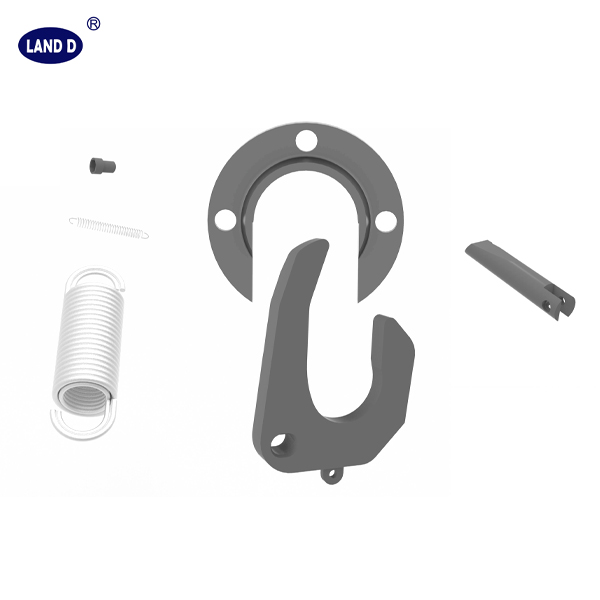Dec . 12, 2024 18:28 Back to list
Components and Features of a Fifth Wheel Hitch for Enhanced Towing Experience
Understanding the Essential Parts of a 5th Wheel Hitch
When it comes to towing heavy loads, particularly with a pickup truck, a 5th wheel hitch emerges as a favored choice due to its stability and ease of use. However, understanding the individual components that make up this critical piece of equipment is vital for ensuring safe towing and optimal performance. Here, we will delve into the essential parts of a 5th wheel hitch and their functions.
1. Hitch Head
At the core of a 5th wheel hitch is the hitch head, which is responsible for securing the trailer to the towing vehicle. The hitch head is designed to cradle the kingpin of the trailer, creating a strong connection that can withstand the forces encountered during towing. Most hitch heads come with adjustable settings, allowing users to customize the height to match the trailer’s geometry. This adjustment is crucial for maintaining a level towing platform, which enhances stability and safety.
2. Kingpin and Jaw System
The kingpin is a crucial part of the trailer that interfaces with the hitch. It is usually a steel pin located at the front of the 5th wheel trailer. When the trailer is connected to the hitch, the jaws of the hitch head securely latch onto the kingpin, creating a rigid connection. The jaw system can vary between models, with some utilizing single-jaw systems for simplicity and others employing dual-jaw configurations for increased security and reduced play in the connection.
3. Base Frame
.
The base frame serves as the foundation on which the hitch head is mounted. It is typically bolted to the truck bed and must withstand significant stress and strain when towing heavy loads. The design and material of the base frame are essential for durability and stability. Good quality base frames are constructed from robust steel with a powder-coated finish to resist corrosion.
4. Adjustment Rails
Most 5th wheel hitches come with adjustment rails, which allow for the positioning of the hitch head to accommodate different trailer sizes and types. These rails are typically installed on the truck bed and can be moved forward or backward to achieve the best fit. This flexibility is especially useful for those who may tow multiple trailers with varying configurations.
parts of a 5th wheel hitch product

5. Pivot Points
Pivot points refer to the mechanisms in the hitch that allow for lateral and vertical movement when towing. This mobility is crucial for navigating turns and uneven terrain, as it helps to reduce stress on both the trailer and the towing vehicle. A well-engineered pivot system ensures smooth handling and prevents the trailer from swaying or bouncing excessively.
6. Safety Chains and Locks
To enhance the safety of your towing setup, 5th wheel hitches typically include provisions for safety chains or locks. Safety chains provide an additional level of security by serving as a backup connection between the towing vehicle and the trailer. In the event that the hitch fails, safety chains can prevent the trailer from becoming detached. Locks, on the other hand, help to secure the hitch head to the base frame, safeguarding against theft.
7. Coupling System
The coupling system is a key feature of the hitch that ensures a snug fit between the truck and the trailer. Depending on the model, coupling systems may utilize different technologies, such as air or hydraulic systems, that can provide smoother coupling and uncoupling actions. This can be especially beneficial for those who frequently hitch and unhitch their trailers.
8. Weight Distribution Features
Some 5th wheel hitches come with weight distribution components designed to evenly distribute the trailer’s weight across the towing vehicle. These features are vital for maintaining control and improving handling, particularly when towing heavier loads. Proper weight distribution is critical for preventing trailer sway and enhancing braking performance.
Conclusion
In conclusion, a 5th wheel hitch consists of several important parts, each working in harmony to facilitate safe and efficient towing. Understanding these components not only helps in selecting the right hitch for your needs but also ensures that you can properly maintain it for reliable performance. By familiarizing yourself with the hitch's parts and their functions, you can enjoy a safer and more enjoyable towing experience. Whether you are a seasoned veteran or a novice, awareness of these elements is pivotal in making the most of your towing setup.
-
Imperial Truck Repair Hayward CA - High Quality, Affordable & Reliable Services
NewsJun.10,2025
-
High Quality Fontaine International do Brasil – Best Discount Offers Online
NewsJun.10,2025
-
Premium Fontaine Valves - High Quality & Discount Offers Durable
NewsJun.10,2025
-
Premium Fifth Wheel King Pins Top Durability & Savings
NewsJun.10,2025
-
Best Semi Trailer Kingpins for Sale Premium & Discounted
NewsJun.10,2025
-
Premium Holland Fifth Wheel Slider Parts Durable & Discount Deals
NewsJun.09,2025
